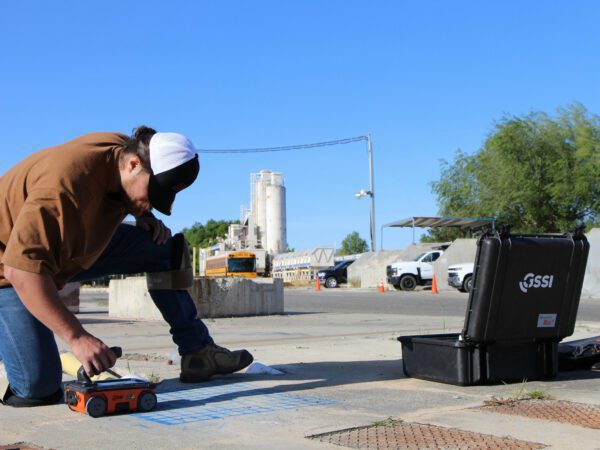Discovering the Key Advantages of Concrete Scanning in Building Projects
In the world of modern-day construction techniques, the utilization of concrete scanning modern technology has arised as a pivotal tool for ensuring project efficiency and architectural stability. From improving safety and security procedures to properly identifying utilities concealed underneath the surface area, the benefits of concrete scanning are complex. RainierGPR Concrete Scanning.
Boosted Security Procedures
Using sophisticated concrete scanning innovation improves safety and security measures on building websites by supplying precise discovery of prospective hazards concealed under the surface area. This modern technology makes it possible for construction teams to recognize rebar, channels, post-tension cords, and other blockages prior to excavation or boring, considerably decreasing the threat of mishaps. By pinpointing these elements precisely, employees can avoid damaging critical architectural components, therefore stopping injuries, hold-ups, and expensive fixings.
Furthermore, concrete scanning plays an essential function in guaranteeing the stability of existing frameworks throughout developments or remodellings. By spotting weaknesses, gaps, or wear and tear within concrete elements, engineers can address these concerns proactively, boosting the total security and durability of the building. This positive technique not only alleviates the threat of structural failings but likewise decreases the capacity for accidents triggered by unanticipated structural shortages.
Basically, the execution of concrete scanning innovation acts as a proactive safety and security step that safeguards both building employees and the structural honesty of buildings, eventually adding to the overall success and performance of construction projects. - RainierGPR Concrete Scanning
Accurate Discovery of Energies
Concrete scanning innovation facilitates specific recognition of below ground energies, boosting building site security and efficiency. Accurate detection of energies is critical in construction tasks to stop costly problems, task delays, and most significantly, make certain the safety and security of workers and the public. By utilizing advanced scanning modern technologies such as ground-penetrating radar (GPR) and electro-magnetic induction, building and construction groups can draw up the location of buried pipelines, wires, and various other utilities with high degrees of precision.

Time and Price Efficiency

Concrete scanning modern technology enables construction teams to properly locate rebar, post-tension wires, and various other embedded things within concrete structures. This precise information aids in staying clear of expensive mistakes such as unintentional damage to crucial aspects during exploration, reducing, or coring activities. Additionally, by identifying prospective threats ahead of time, the need for costly repairs or remodel because of damages can be minimized, causing set hop over to these guys you back financial savings for the job.

Additionally, the capability to swiftly and accurately find energies below the surface area without causing any kind of damage not only conserves time yet additionally protects against expensive disruptions to existing facilities. Overall, the time and cost performance benefits of concrete scanning make it a very useful tool for enhancing building project administration and execution.
Conservation of Structural Honesty
Maintaining the structural Recommended Reading stability of buildings and framework is vital in making certain long-lasting stability and safety and security. Concrete scanning plays a vital function in this preservation process by permitting building professionals to identify prospective risks to the architectural stability of a building or facilities before they intensify into major problems. With using sophisticated scanning modern technologies such as ground-penetrating radar (GPR) and electro-magnetic induction, construction groups can non-invasively assess the problem of concrete frameworks, find rebar, post-tension cables, and various other embedded elements, and identify any spaces, fractures, or wear and tear within the concrete.
Improved Project Preparation
In order to make sure the effective implementation of building and construction tasks, thorough interest to information and complete planning are important elements that stem from a detailed understanding of the architectural conditions recognized with concrete scanning. Improved task planning, facilitated by concrete scanning, allows construction teams to preemptively resolve possible difficulties, assign resources a lot more successfully, and develop reasonable timelines. By accurately identifying the place of rebar, post-tension cables, and various other embedded objects within concrete frameworks, job supervisors can establish more specific construction plans that minimize the danger of pricey mistakes or delays. In addition, the data acquired from concrete scanning enables stakeholders to make educated choices concerning architectural alterations, restorations, or growths, leading to smoother project transitions and boosted general task results. Inevitably, incorporating concrete scanning right into the project planning stage boosts sychronisation among staff member, promotes positive problem-solving, and contributes to the effective shipment of building and construction projects within budget plan and timetable restrictions.
Verdict
Finally, concrete scanning offers many benefits in building jobs. By boosting precaution, properly detecting utilities, improving time and cost efficiency, maintaining architectural stability, and aiding in job preparation, concrete scanning shows to be a vital device for effective task implementation. Its capability to minimize risks, raise performance, and ensure task honesty makes it a vital asset for construction specialists.
In the realm of modern-day building and construction techniques, the utilization of concrete scanning technology has actually emerged as a pivotal tool for guaranteeing job performance and structural stability.Concrete scanning modern technology visite site makes it possible for building and construction teams to accurately find rebar, post-tension cable televisions, and various other ingrained items within concrete frameworks. Through the usage of sophisticated scanning innovations such as ground-penetrating radar (GPR) and electromagnetic induction, building teams can non-invasively assess the condition of concrete frameworks, situate rebar, post-tension wires, and other embedded elements, and determine any kind of gaps, fractures, or wear and tear within the concrete.
In order to guarantee the effective implementation of construction tasks, precise focus to detail and complete planning are crucial parts that stem from a comprehensive understanding of the architectural problems recognized via concrete scanning. Ultimately, incorporating concrete scanning into the task preparation phase enhances control amongst team members, cultivates proactive analytic, and adds to the effective distribution of building jobs within spending plan and timetable constraints.